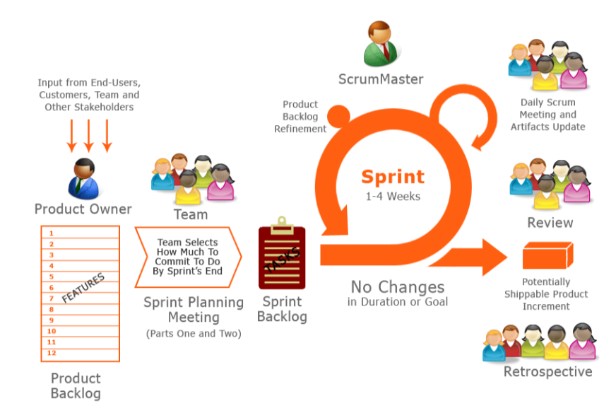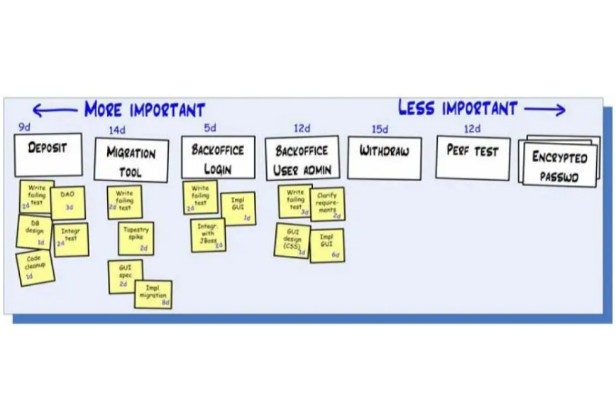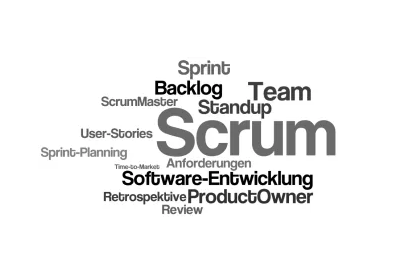Product team members are familiar with sprints in scrum and agile, and some may even know what they are.
But what exactly is the sprint backlog?
The sprint backlog lists the tasks that the team should complete within the duration of a sprint.
User stories and bugs are both included.
It can be utilized by any team member while they are working on the project.
Learn more about what should be in a sprint backlog, how it functions, who owns it, and when it is created.
Table of Contents
What is Sprint Backlog?
The Sprint Backlog only includes the items or things that can be finished during each sprint and is derived from the Product Backlog. As they prepare to embark on a quick sprint, consider it the team’s orders.
This is a piecemeal approach to clearing the product’s backlog of numerous tasks. The project’s difficulty would determine the sprint backlog, but the general idea is to limit the team’s focus to tasks that can be completed in a sprint. It goes without saying that if a project is complex, the sprint backlog can also grow in size and complexity.
Why is the Sprint Backlog Important?
The goal of a sprint backlog is to continuously display on a task board or scrum board a visible representation of the status of the user stories in the backlog. The team recognizes collaboration as being essential to achieving the Sprint Target, and the Sprint Backlog clearly demonstrates this. Following the quality improvement, it adds at least one high-priority process improvement that was uncovered during the most recent Retrospective meeting.
The tasks that are missing from the committed user stories can be added to the Sprint Backlog, but it’s crucial to make sure that no new user stories are introduced until the Sprint Backlog has been committed and finalized by the Scrum team. In the overall Prioritized Product Backlog, any new criteria that are discovered during a Sprint should be added to a potential Sprint.
What is a Sprint Backlog Example?
Examples of sprint backlogs can be found in a variety of contexts.
Any activity or task you have to complete within a single sprint will be the sprint backlog example.
It can include user stories, fixing bugs, technical debt issues, and more.
Before each sprint starts, product backlog grooming sessions are when the items are created. Let’s use the sprint backlog example from software development as an example for the moment.
A good sprint backlog example is the bug list.
In the sprint backlog example, any additional information about bugs, such as who reported them and when will also be included.
Since the bug list contains tasks that the development team needs to complete, it serves as a great illustration of a sprint backlog.
A bug, in this context, refers to an error or problem with code that your team should fix.
The sprint backlog belongs to the product owner, and their approval and input are required before an item can be added to a sprint backlog.
Usually, this item in sprint planning can be created by the development team without their input.
But at some point during the project, they ought to have already discussed all of their bugs with them.
They can learn what has been fixed, what needs to be fixed, and what has been postponed for upcoming updates from such a discussion.
The number of bugs in the backlog should always be known to the development team.
Let’s say that during the sprint planning meetings you will increase it by more than the usual amount. If that’s the case, they can either address these issues in advance or add them to the product backlog.
Apart from this, another sprint backlog example is a new feature lined up for a product. This includes stories, epics, and sub-tasks (i.e., tasks that make up a story).
Now that you are familiar with the sprint backlog, let’s find out who makes it and when.
When is the Sprint Backlog Created?
When the team gets together to decide what will be worked on during the upcoming sprint, you can create the sprint backlog.
Or to put it another way, the sprint backlog develops during the sprint planning phase.
During sprint planning, it is essential to create a sprint backlog. Such planning helps to know what can facilitate better transparency.
By outlining everything on paper or on a whiteboard, you can create the sprint backlog in a matter of minutes. Then, you can prioritize it as per business value and other factors.
It is challenging for the team to know what they should be working on without creating a sprint backlog. It is nearly impossible to start a sprint without creating a sprint backlog.
Adding the tasks necessary to complete the user stories on the sprint backlog is the next step after creating the sprint backlog. Grooming, coding, testing, and other tasks will also be done.
It’s important to include everything in a task because it might involve adding new features or fixing bugs.
To carry out tasks related to finishing user stories, each team needs a task owner.
Keep in mind that the team members who aren’t working on a particular task need to be kept informed as well.
They ought to conduct routine follow-ups and inquire when necessary. Because of this, the team is guaranteed to have the support of all its members at all times.
When creating a sprint backlog, remember not to put too many tasks. Place tasks that you won’t finish or might start last on your list.
Such a procedure will only lead to disarray and tension among the team members.
When developing the sprint backlog, be sure to take these precautions. To create the sprint backlog, you must appoint someone, so keep that in mind.
Who Creates the Sprint Backlog?
The sprint backlog’s task list is produced by a product owner.
They may delegate this responsibility to a scrum master if they wish.
The responsibility of the product owner includes choosing which tasks to include and ranking them according to their business value.
The product owner is the person or team member working with stakeholders to prioritize requirements.
It is critical to get feedback from other team members before creating user stories for each sprint.
In this scenario, the scrum master’s job entails putting together a prioritized list of user stories required by the end of a sprint for a workable objective.
On what needs to be developed in each sprint, they will need feedback from others.
You will comprehend what is contained in a sprint backlog after reading the section below.

Who Owns the Sprint Backlog?
The entire scrum team collectively owns the sprint backlog. Along with the development team, the product owner is also a part of this.
Planning the sprint and avoiding scope creep can be facilitated by the distinct perspectives that each team member brings to the table.
The initial sprint backlog is created by the product owner, who then assigns ownership to other team members.
Each member reserves for themselves one or more items from it as “their responsibility.”
All other tasks are further divided up by the members of the development team so that they can be finished collaboratively.
Since you divide the ownership of the sprint backlog among team members, they are accountable for its completion.
Each person must have an understanding of all items in their backlog.
Since everyone is aware of what their teammates need, it facilitates communication among the group.
The drawback of having this shared ownership of the sprint backlog is that the team might not have enough time to work on every task.
Because every team member will have a different worldview, there is a possibility of disagreements on what to include in the sprint backlog.
In addition, the sprint backlog may already be overflowing with ideas for improvements. This could hold to the common proverb, “The broth is spoiled by too many cooks.“
Every member of the team should collaborate closely and be aware of the tasks, just like with any other agile methodology.
Keeping this in mind, the sprint backlog is a work in progress.
As the team members discover what functions best for them, it gets better over time.
In order for you to comprehend how scrum performs its duties effectively, we give you the facts you need—both the good and the bad.
Whether or not this agile methodology is best for your team can be decided with knowledge.
Who can actually carry out the tasks on the sprint backlog will be discussed in the following section.
Who Can Execute the Work of the Sprint Backlog?
The team members execute the work of the sprint backlog.
But before we go any further, let’s first clarify why you need to carry out the tasks on the sprint backlog.
To show the product owner the finished work at the conclusion of a sprint, you must implement the sprint backlog.
Think about that, for instance, if you are working on software in an agile development project. For this iteration (sprint), your team has three stories to complete. They’ll list each of these tasks in their backlog if that happens.
The tasks in the sprint backlog can be listed once your team has finished the work to demonstrate that it was delivered.
After that, there are two scenarios:
- You completed all the work.
- You couldn’t complete the entire task.
In the latter case, you must demonstrate what was left unfinished and why.
The sprint backlog is the most important part of scrum because it provides visibility. It displays the quantity of work finished during each iteration.
It includes a list of all the tasks you must complete in order for your team to deliver its product at the end of the sprint.
If we have a finished, ready-to-ship product at the end of each iteration, our team’s sprint backlog should be empty.
Being on the same page is made easier by such a well-organized system. Moreover, it also calculates productivity and points of improvement.
The most important step in carrying out the sprint backlog is the sprint planning meeting.
The group gathers to go over the project objectives and how the next two weeks’ worth of work will be divided up. You can do this in a short, collaborative session where everyone has an equal voice.
When completing sprint backlog work, there are roles and responsibilities involved. They are as follows:
- Product Owner: the person in charge of prioritizing the tasks that the team will complete during a sprint. Additionally, this role interacts with stakeholders outside the team to solicit their opinions on the features of the product.
- Scrum Master: oversees that all tasks are completed in accordance with the scrum framework, such as by conducting daily scrums in the morning.
- Development Team: consists of developers who are in charge of writing stories, testing, and coding.
Daily scrum meetings are also held by the team.
Such a meeting enables them to communicate about anything related to their sprints and creates a safe space to discuss their issues.
What is Included in a Sprint Backlog?
All the tasks that a team anticipates finishing during an iteration are included in a sprint backlog.
They are usually tracked by story points and organized in priority order for estimation, planning, and efficient completion.
Sprint backlog consists of product backlog items that you must complete in each sprint. The team benefits from being aware of their upcoming tasks.
However, based on what must be accomplished in each sprint, each backlog is specially tailored.
All scrum sprint backlogs share a few items in common. They are listed below:
- Releases: Unreleased sprint-related work that has not yet been completed. The latter as well as earlier releases are included.
Chisel enables you to extend your workspace with feature and product release cycles. Learn more about how to access and modify releases.
- Completed Tasks: Release requires tasks that were finished in a prior iteration or related tasks.
- Work In Progress (WIP): Any task that needs to be finished before the subsequent iteration.
- Backlog: All items, irrespective of their status, are in a sprint backlog.
A sprint backlog’s elements provide the team with a framework within which to operate.
In other words, the scrum sprint backlog provides a structure for what needs to happen in each project iteration.
It identifies incomplete tasks with various statuses that need completion.
Imagine, for instance, that the sprint backlog contains a list of every task you must complete in order to complete an iteration’s main objective.
In that case, it also includes tasks that are broken down into smaller components, which include statuses like “To Do,” “In Progress,” and “Done.”
The components of a sprint backlog are now clear to you.
But how thorough should the sprint backlog be?

How Detailed Should the Sprint Backlog Be?
The sprint backlog needs to be sufficiently detailed so that the team members can understand what needs to be done.
They should also know their tasks and how much time it will take to complete them.
This will allow for more accurate forecasts when it comes to planning out the rest of the sprint.
In order for team members to comprehend the tasks they must complete within a set amount of time, the sprint backlog must contain sufficient details.
Each task must have a clear timeline associated with it.
For everyone involved, each task should have a related deadline. The team is able to determine how much time they will need and when those tasks must be finished thanks to this.
Keeping the sprint backlog detailed tracks each task’s progress throughout development.
Additionally, it’s useful to know when the assigned team member finishes each task.
However, the sprint backlog’s purpose is often confused with the release backlog.
To learn how the two differ from one another, read the section that follows.
Release Backlog Vs. Sprint Backlog
The release backlog is the list of features developed in a given time, for example, three months.
On the other hand, the sprint backlog contains tasks and sub-tasks that require one iteration or sprint cycle.
Depending on your company’s process, the iteration may last between two and four weeks.
The release backlog focuses on the larger goals. The sprint backlog, on the other hand, contains tasks that must be finished quickly.
The release backlog assigns features a priority based on the demands of the market. The sprint backlog, on the other hand, adheres to the prioritization strategy used by your business.
The release backlog belongs to product managers or other stakeholders. They are in charge of laying out the aims and targets to be accomplished in a specific time frame.
On the other hand, the sprint backlog, which contains the necessary tasks, belongs to the development team.
After the planning meeting, the team creates the release backlog, which serves as the foundation for the sprint backlog.
The metrics used while creating the release backlog involve market needs or business goals. On the contrary, the sprint backlog gauges productivity and efficiency.
The release backlog outlines to-be-developed features in a given timeline derived from user stories.
Product managers are empowered to consult with cross-functional teams on any changes made during development. Scrum masters, development teams, stakeholders, and product owners are some of these teams.
The number of tasks you can complete in a single iteration, the team’s velocity, and the dependencies between those tasks are the metrics used in the sprint backlog.
Comparatively speaking to the release backlog, the sprint backlog is a dynamic process.
A release backlog remains static throughout an organization’s development life cycle.
Each task for the upcoming sprint is on the sprint backlog. Future releases or significant milestones are listed in the release backlog, however.
The sprint backlog is shorter in duration than the release backlog.
When is New Work Added to the Sprint Backlog?
The new work added to the sprint backlog has a new requirement that the team should address in the upcoming sprint.
You can identify this work while reviewing issues, or it can come from an external stakeholder.
The stakeholders will then decide which requirements are most crucial for the product roadmap and rank them accordingly.
Pro tip: It is essential for everyone to curate product roadmaps using the best product management software available.
The work is then given priority and added to the sprint backlog. To prevent work from being over- or under-prioritized, you must involve all stakeholders in the process of setting priorities.
You assign tasks to the team members before the sprint begins. These typically last a few hours each, which you can figure out using a web-based time clock program.
If nothing prevents you from making progress on any of them, you can finish them in one or two days.
But during this time, new opportunities may come up for more urgent work, which is usually a priority “A” task.
The group will talk about these new duties and decide how much time will be needed to complete them. After that, add the work to the sprint backlog along with their projection of when it will be finished.
Adding new items to the sprint backlog helps the team know how much work they can take on in future sprints.
It helps them identify when they’re getting behind or when the work is too little to do in one sprint.
If you finish a task before the team expects you to or if something more urgent needs your attention, the task will also be removed from the sprint backlog.
It keeps everyone on track with their commitments and enables them to see how many tasks the team has completed.
Adding new work to the sprint backlog is to ensure that the team knows how much work they can prioritize.
For instance, you might add a task to the backlog for the subsequent sprint if it is too large for one sprint.
However, the disadvantage of adding new work to the sprint backlog is that it can make the team less productive. The split attention in this instance is a time waster.
Therefore, we advise only adding tasks to the sprint backlog when there is insufficient time left in the sprint. Never take this action without first consulting with the other stakeholders in the scrum process.

How to Prioritize Your Sprint Backlog
While it’s critical to correctly prioritize the product backlog in order to realize the roadmap’s product vision, doing so is just as crucial.
A prioritized sprint backlog enables you to:
- Keep things rolling during the sprint
- Motivate team members
- Optimize processes
- Improve efficiency and speed
- Achieve your sprint goals
You can use the advice and best practices listed below to organize your sprint backlog and get your team ready for a productive sprint.
Take the Quick Wins First
Complex user stories frequently catch the attention of and pique the interest of developers. It may be tempting to give difficult tasks top priority as a result. This approach often leads to items languishing between “in development” and “ready for testing” for too long. Further delays result from the testers receiving a large number of stories near the end of the sprint. Stagnant motivation, frustration, and unfinished sprint goals can all be consequences of slower progress.
Starting with small, straightforward tasks before moving on to more challenging ones is the best method for prioritizing the sprint backlog. Always include a few stand-alone tasks in the sprint backlog that any team member can choose from and begin working on if they are stuck on another task that has been put on hold because of unmet dependencies.
Prioritize Dependencies
The best way to reduce development time is to prioritize dependencies correctly. The readiness of a backend service is frequently a requirement for a front-end task. Determine the interdependent roles and order them so that nobody on the team has to wait for another to finish.
It can be even harder to prioritize dependencies when working with cross-functional teams. Try to perform a backlog refinement in advance of working on a significant cross-functional feature to locate and address dependencies. Before beginning sprint planning, if at all possible, make an agreement or a schedule.
Identify Impediments and Conduct Investigations Early On
If a number of issues are mentioned when discussing stories during sprint planning, prioritize those investigations early on in the sprint so there is enough time to develop and test. A few meetings and team collaborations may be necessary for investigation, but they can be coordinated with the early stages of the sprint’s development of the simpler tasks.
There aren’t many obstacles that might come up again while development is underway. Prioritize the task for development after attempting to recognize and resolve them beforehand.
Firewalls are a typical illustration of such a barrier; opening firewalls beforehand when working with third-party services can greatly reduce the amount of time required for the development.
Account for Resource Availability and Scheduling
During sprint planning, it’s common to underestimate team members’ absences due to illness or other reasons.
Determine whether there are any holidays or vacations scheduled for the team members during the sprint by talking about their availability. Tasks should be assigned according to velocity. Connect the tasks’ dependencies with the resources’ availability.
Even on a T-shaped team, some members’ areas of expertise are shared, and other team members are unable to pitch in even when it is necessary.
Anticipate Bugs
Failure to plan for unforeseen tasks and complications is another common error product teams make. There should always be room to fix problems if a team is managing an already-running product. Even if the team is working on one of a product’s very first features, there will still be errors that are challenging to locate and labor-intensive to fix.
It’s a good idea to allocate 80% of the team’s velocity to new development while saving 20% for unanticipated events as a general rule of thumb for accounting for unpredictable circumstances.
8 Tips for Making Your Sprint Backlog Great
- Include the whole team; different team members have different perspectives and inputs that can help the sprint backlog.
- Share decisions; by defining how tasks should be handled during the sprint, all team members must participate in the planning phase. This fosters joint ownership.
- Definition of Done: Each item in the backlog needs to have a predetermined, agreed-upon, realistic completion criterion so that everyone on the team can identify when it is finished.
- Include a variety of tasks; it is typical to concentrate on one aspect of development during planning, such as coding. All project components—architecture, coding, UI/UX, testing, etc.—must be covered in a good backlog.
- Tasks should be assigned by team members, and you should allow them to do so on their own so that they can learn, communicate, and work together more effectively.
- After the team breaks the sprint goals down into smaller tasks, they should reevaluate their initial commitment to the sprint scope. Revisions should be based on careful planning.
- The backlog should be dynamic, allowing for quick updates in response to new opportunities and challenges that arise during a sprint.
- Continually update tasks and estimates in the backlog. Making decisions and having a good chance of achieving the sprint goal become impossible when you don’t know where your team stands.
Conclusion
The sprint backlog is one of many elements that must be kept in mind in order to build a successful team; however, it is a crucial element.





